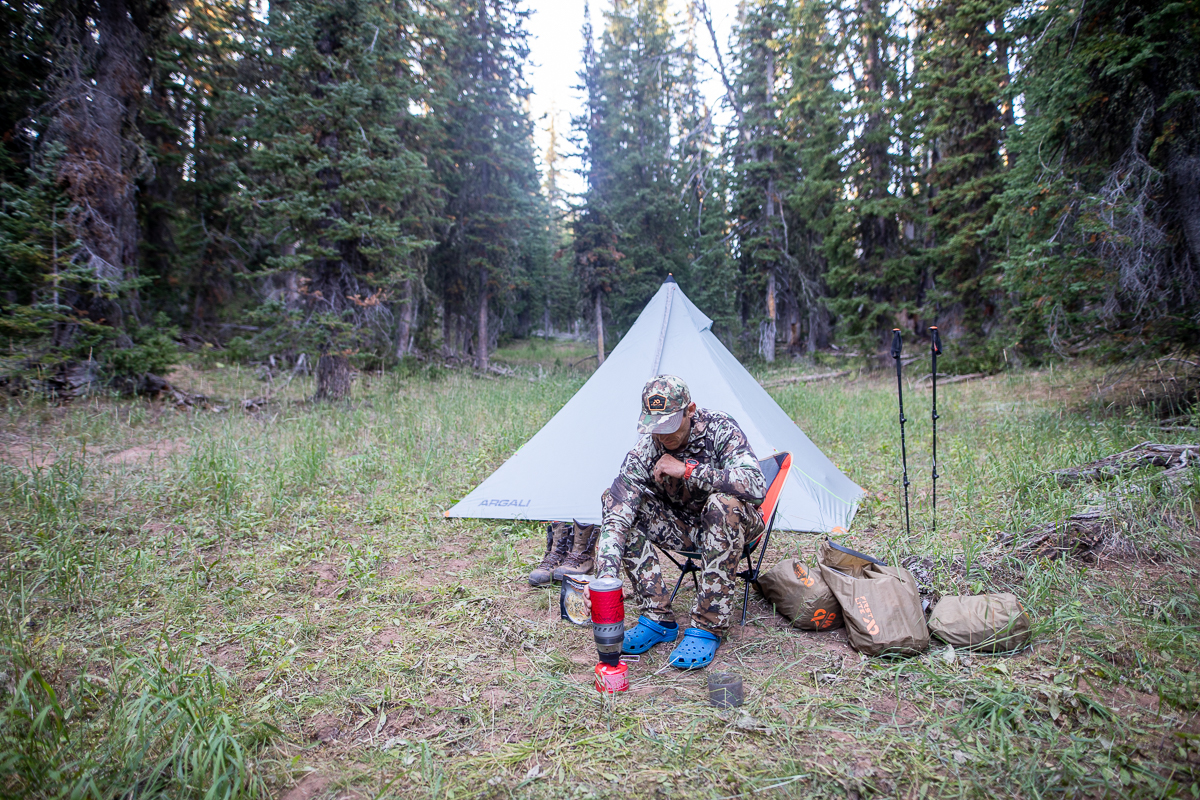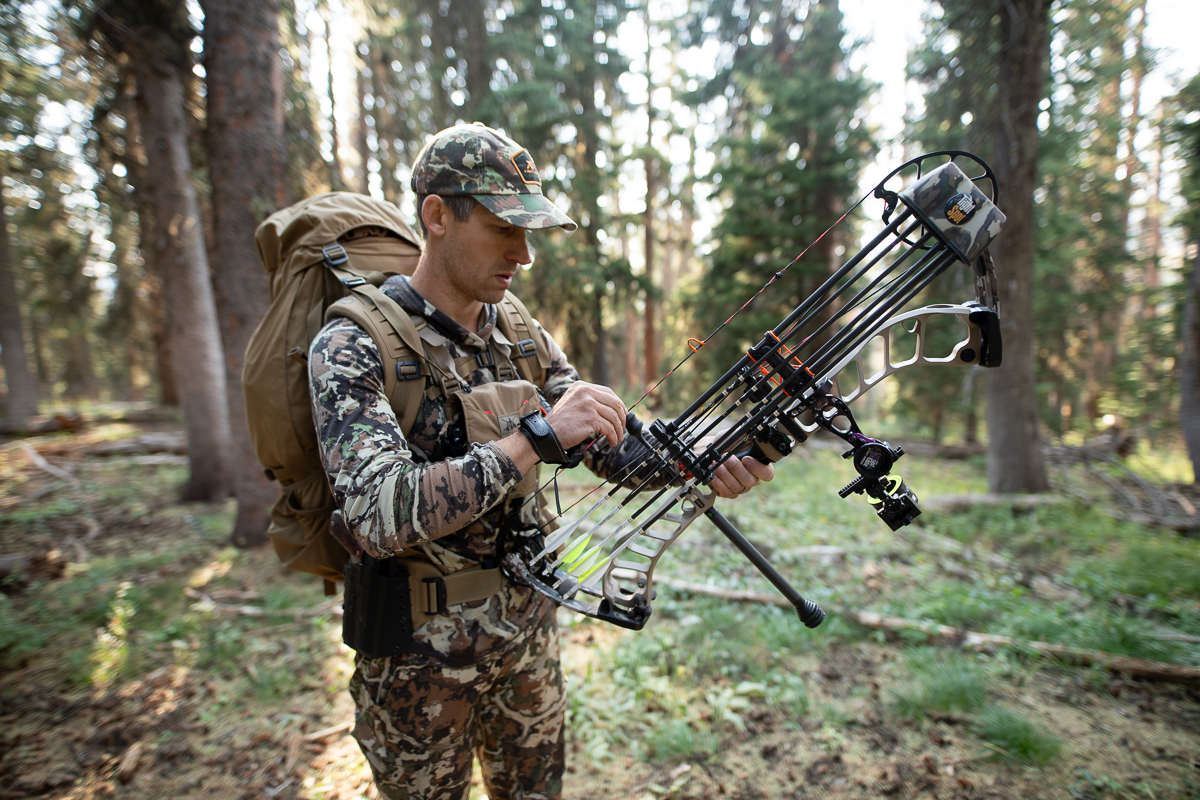Author: Brad Brooks, Argali CEO
I spend an inordinate amount of time thinking about where I’ll camp on my hunts. In addition to knowing where I want to hunt and where I think I’ll find elk, where I’ll end up camping is one of the key pieces that make or break my success. I will readily admit that thinking about where and how you camp is not high on the list of things most people will think of as important to their success. However, where you sleep can help or hurt your chances of success.
How To Pick a Camping Spot: The Basics
The core decisions you make around where to camp might seem straightforward, but putting the pieces together is anything but simple. The good news is that if you read the terrain, consider the perspective of your quarry, and make some inferences about how animals are likely to move through the area, you can improve your chances even while you sleep.
Don’t Disrupt the Game
This is going to sound basic, but wherever you camp it is important to make sure your camp is not disruptive to the game you are trying to hunt. If you are backpack hunting an area that has a lot of open terrain, pick a spot to pitch your tent that is not easily seen by animals. Don’t pitch your tent on an open ridge where every animal can see you as you move around your tent in the morning and evening. I see this happen all the time—everyone wants a home with a view. You can (and sometimes should) pitch your tent on a ridge, just conceal yourself or camp near a group of trees so you aren’t sky-lined. As a general rule, be discrete and err on the side of caution.

Know Where the Elk Are
You want to camp close to elk, but not in the elk. In particular, think about what the wind and thermals are doing. Thermals will almost always go downhill in the mornings, uphill in the late morning or afternoon as temperatures rise, and again downhill in the evening as temperatures cool. I’ve walked into places where I know elk like to hang out and found people camped right in the zone. To no one’s surprise, there weren’t elk around. If you’re camped right where the elk want to be, the elk likely won’t be there.
It’s hard to say exactly how far you should camp away from where the elk are because the circumstances will dictate the right choice. Sometimes it will be ¼ mile away, sometimes ½ mile away. Use common sense to think about whether where you are camped is a place where the wind or thermals are likely to blow from you towards the elk at any point, and whether your camp spot is exposed.
Camp Close to Water
You don’t have to camp close to a water source, but it sure helps if you do. Elk are big animals, and they need access to water every day, particularly during the warmer months. We also need water every day. In some arid western environments, water sources can be fickle, and finding them is important not only for making sure you have enough water, but as a strategy for knowing where the elk are. This is where spending time e-scouting can really help, particularly if you are backpack hunting. Use your aerial imagery in the area you are hunting and drop pins on springs, ponds, and other water sources. For small seeps and creeks, I like to drop pins at the highest point of the source, knowing there should be good water below that point.
However, if you are hunting in an area where water is scarce, camping right next to that water source likely is not a wise choice if that is the same place the elk are coming to water. This is particularly relevant in places where the best water sources are stock ponds or water tanks in the southwest. Stay within striking distance, but try not to push the elk out of the area.
Being Mobile vs. Base Camp
Backpack hunting isn’t a new way to hunt, but whether you hunt from a truck camp or a base camp that you backpacked into, there are strategic choices to be made about how and where you should camp. If you’re backpack hunting, the most common way people hunt is to hike into a place, set up camp, and make day trips from that camp. That way of hunting is fine and I’ve done it many times. However, being mobile during archery season has a lot of advantages.
Mobile Camping

My preferred way to hunt archery elk is to backpack hunt and have my camp on my back every morning so I can follow the elk wherever they are, be patient, and wait for the right opportunity. This style of hunting requires me to pack light and take a tent that is going to be relatively easy to find a place to pitch. As a general rule, finding nice big flat spots to pitch your tent is hard to come by in the mountains. I’ve slept in a lot of deer beds or kicked out a spot on a hill to sleep. I like a one- or two-person tent if I’m backpack hunting for elk (or even a tarp), but no more than a 4-person tent if I have to find a new spot to camp every night and don’t know what I’ll find for flat spots.
If I’m tracking a herd and I end up not getting an opportunity before it gets dark, I will mark where I saw the elk at last light and retreat to a safe distance to camp knowing I will likely find them very close to where I left them.
Having a Base Camp
If I am backpacking in to set up a base camp, I prefer to camp close to a ridge system so I can cover ground and listen for bugling activity. I also like to be somewhere I can hunt in multiple directions on any given day. If the spot you plan to set up a base camp really only has good-looking habitat to hunt in one direction, I would have a few other spots in your quiver if the hunting isn’t what you want it to be. This is where doing your homework in advance to find water sources that are somewhat high up can be strategically helpful, in addition to thinking about how you will approach the terrain you are hunting. Do your e-scouting in advance and drop pins in the places you think would be good potential camp spots.
Whether you are backpack hunting, base camp hunting, or doing a combination of both, put some time and thought into camping in strategic places—and not necessarily the easiest places. Be prepared to be nimble and adaptable based on the circumstances and what you are seeing in the field and you’ll increase your chances of success.
See some of Argali’s lightweight tents and how they would work for your hunting camp setup:
Argali Gear: Rincon 2P Tent
The Rincon 2P is the ideal lightweight 2-person mountain tent, with a single trekking pole pitch, spacious interior, removable stove jack, no-sag when wet fabric, single zipper door, and modified rectangular shape for optimal pitching in uneven terrain.
Argali Gear: Absaroka 4P Tent
The Absaroka 4P is a lightweight, spacious, 4-person tent designed for backcountry hunting. Built with dual doors, a removable stove jack, and a tall pitch height to optimize wind sheer and snow shedding, the Absaroka is built for 4 season use and features sewn-in line-loc adjusters on all guy-out points for quick and easy pitching.